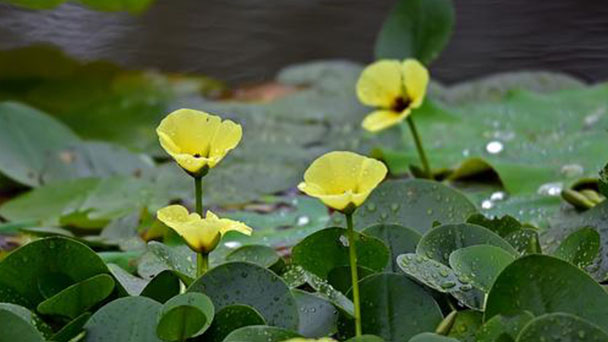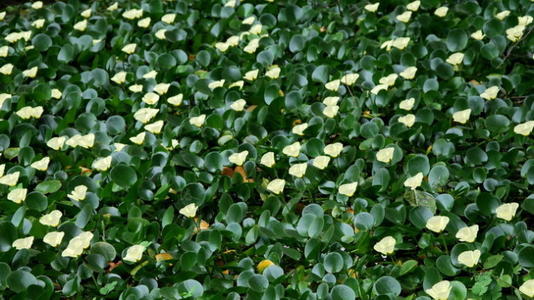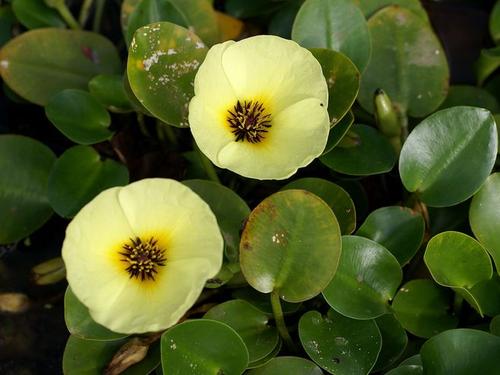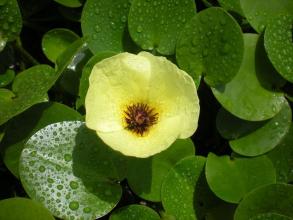Water poppy (Hydrocleys Nymphoides) profile
Written by Maggie
Aug 26 2021

Water Poppy (Hydrocleys Nymphoides) is a perennial floating leaf herb belonging to the family Water Poppy.
Water poppy picture

Morphological characteristics of water poppy
Strain
The plant height of Water Poppy is 5cm, and the stem is cylindrical. Roots arise from the joint of the stem in water.
Leaf
Leaves of water poppy (Hydrocleys Nymphoides) are clustered on the stem. Leaves are ovate to nearly round, with long stalks, 4 ~ 8cm long and 3 ~ 6cm wide. The top is blunt, the base is cordate, and the whole margin. Petiole cylindrical length varies with water depth, septum.
Flowers
Water poppy is an umbellate inflorescence with small long-stemmed, poppy shaped flowers and yellow flowers.
Fruit
The capsule of Water poppy is lanceolate. Seeds are small, numerous, horseshoe - shaped.
Water poppy flowers from summer to autumn.
Ecological habits of water poppy
Water poppy (Hydrocleys Nymphoides) lives in ponds, lakes and ponds. Like warm and humid climate environment, low or high temperature will affect the normal growth of plants, like the environment with sufficient sunlight, at least let the plants receive 3-4 hours of scattered sunlight every day. Water poppy likes warmth and is not cold resistant. Water poppy grows well in the temperature range of 25 ~ 28 ℃, and the overwintering temperature should not be lower than 5℃.
The distribution region of water poppy
Water Poppy is native to Central and South America.

How to grow and care for water poppy
Water poppy often lives in ponds, lakes and ponds. Water poppy likes a warm, humid climate environment,
Both low and high temperatures will affect the normal growth of plants. They prefer an environment with sufficient sunlight. They should receive at least 3-4 hours of scattered sunlight every day.It likes warmth and is not cold resistant. Water poppy grows well in the temperature range of 25 ~ 28 ℃, and the overwintering temperature should not be lower than 5℃.
Water poppy toxcity
Although not considered toxic, the rapid growth rate and web-like stem structure has the ability to choke streams, cause flooding, and eliminate native flora. The thick mats formed by water poppies may increase drowning risks of small animals and decrease dissolved oxygen concentrations—the amount of oxygen available to fish and other aquatic organisms.
The water poppy trade is not prohibited, but certain councils, such as the New Zealand Plant Conservation Network, request any wild sightings be reported. It is highly recommended that water poppies are routinely cut back and dead leaves are removed to maximize its water-cleaning benefits while minimizing its risks to other flora and fauna.
Landscape use of water poppy
Water Poppy (Hydrocleys Nymphoides) is applied to Water features in Chinese gardens.
Water Poppy's leaves and flowers are very ornamental and can be used as cut flowers to decorate flower arrangements.
Water poppy can be planted in shallow Water for cultivation and ornamental, also commonly used pot ornamental, suitable for bush planting.
Water Poppy is suitable for open cultivation and can be used as a decorative material for shallow Water at the edge of the pond. Water poppy can also be potted and used as a garden Water greening plant with high ornamental value.

Latest Updated
- Benefits of Bugleweed - 7 Science-backed Health Benefits
- Bugleweed Dangers & Side Effects - Is It Poisonous?
- How to Plant Evergreen Trees - What You Should Know
- When to Plant Evergreens - Grow Guide for Evergreen Trees
- 12 Wonderful Evergreen Shrubs for Your Garden
- 12 Popular Evergreen Plants with Pictures for Beginners
- When And How To Prune A Lilac Bush Like a Pro
- How to Grow & Care for Lilac Vine (Hardenbergia Violacea)
- Japanese Lilac Tree (Syringa Reticulata) Care & Propagation Guide
- Shumard Oak Pros and Cons - What to Know
Popular Articles
- Winter maintenance of Antirrhinum Majus
- How to Grow Terminalia Mantaly Tree
- How to Grow and Care for Crossostephium Chinense
- How to grow Antirrhinum Majus in spring
- Peristeria Elata (Dove Orchid) Profile: Info & Care Guide
- Underwatered Snake Plant (Sansevieria Trifasciata) - Signs And How To Fix
- How to Care for Brazilian Jasmine Plant (Mandevilla Sanderi)
- How to Grow & Care for Graptopetalum Purple Delight in Summer
- Rosa Chinensis (China Rose): Plant Growing & Care Tips
- How to Care for Baby Sun Rose (Aptenia Cordifolia)